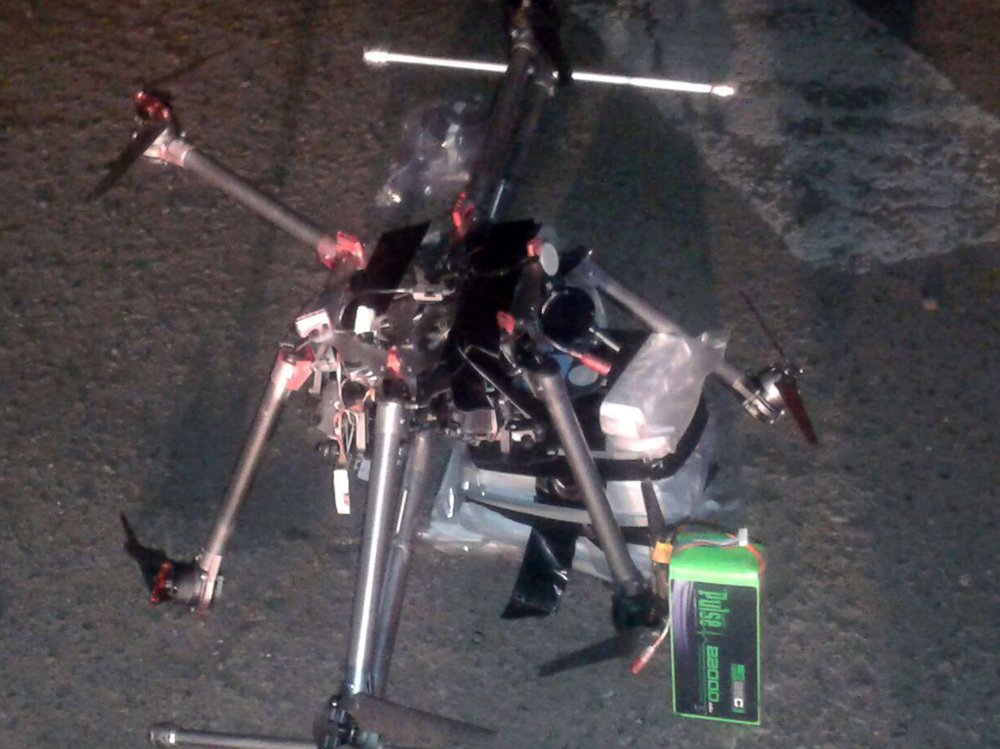As the political clash over the Trump administration’s “zero tolerance” immigration policy has played out on the U.S.-Mexico border, hovering above is the growing presence of drones.
These small unmanned aircraft systems are piloted by multiple interests — drug traffickers looking for a way into the country, the U.S. government trying to keep them out, and even journalists hoping to get a new point of view on an issue that has gripped headlines for weeks.
U.S. Customs and Border Patrol has increasingly invested in anti-drone technologies as well as their own patrol aircraft.
In fiscal 2018, as of March 26, there have been 36 reports of small drone, or small unmanned aircraft system, sightings to the Air and Marine Operations Center along the U.S.-Mexico Border, Jennifer Gabris, a spokesperson for the CBP office of public affairs, told theWashington Examiner via email. By comparison, there were only 19 reports in all of fiscal 2017.
Of those sightings so far in fiscal 2018, which began in October, only one of the drones was seized, Gabris said.
“It was being used for counter-surveillance in conjunction with narcotics smuggling,” Gabris explained. Of the rest, she added, “We cannot be certain of ownership or intent of each of the sUAS. The potential for the sUAS to be involved in counter-surveillance activities is high because of the areas in which they are operating.”
Smugglers are not only using these drones to find vulnerabilities in the border during criminal counter-surveillance missions, but also to transport small quantities of narcotics. One smuggler in August 2017 almost successfully flew a load-bearing sUAS with 13 pounds of methamphetamines into the country, CBP announced in January. However, Border Patrol agents arrested the man, who was sentenced to 12 years in prison, and seized the device.
While that one instance was a success story for border officials, nobody is sure how many other smugglers are getting by unseen. The size and ultralight weight the materials from which the aircraft are constructed make them extremely difficult to detect.
But while criminals are getting more savvy at using the new technology, law enforcement are also stepping up their own drones and anti-drone technology.
The result is a technology race between the smugglers and law enforcement, and Miriam McNabb, CEO of Jobfordrones and a contributing editor to Dronelife.com, sees the U.S. government with the advantage.
“This isn’t a tool that will work for criminals or terrorists for very long,” McNabb told theWashington Examiner via email. “The government is ramping up efforts and investments in anti-drone technology quickly, and they’re closing the gaps in regulation that may tie their hands in dealing with rogue drones.”
“The capabilities are developing so fast that sometimes current regulations and processes weren’t designed with drones in mind — the same way that government agencies weren’t set up to deal with smart phones and mobile computing when they became prevalent,” she continued. “But the anti-drone industry is developing just as fast, and government is very aware and very active in evolving their processes to meet the challenges.”
Among CBP’s tools are the Air and Marine Operations’ Tethered Aerostat Radar System, which has been “extremely successful in detecting and tracking ultralights operating along the Southwest Border,” according to Gabris. AMO and Border Patrol use existing radar and surveillance camera technology, including Department of Defense and Federal Aviation Administration radars, TARS, Remote Video Surveillance Systems, Integrated Fix Towers, and Mobile Surveillance Capabilities to detect and track ultralight aircraft, she added.
Photo: A drone with drugs attached to it is pictured in Tijuana, Mexico –
Source: Washington Examiner

